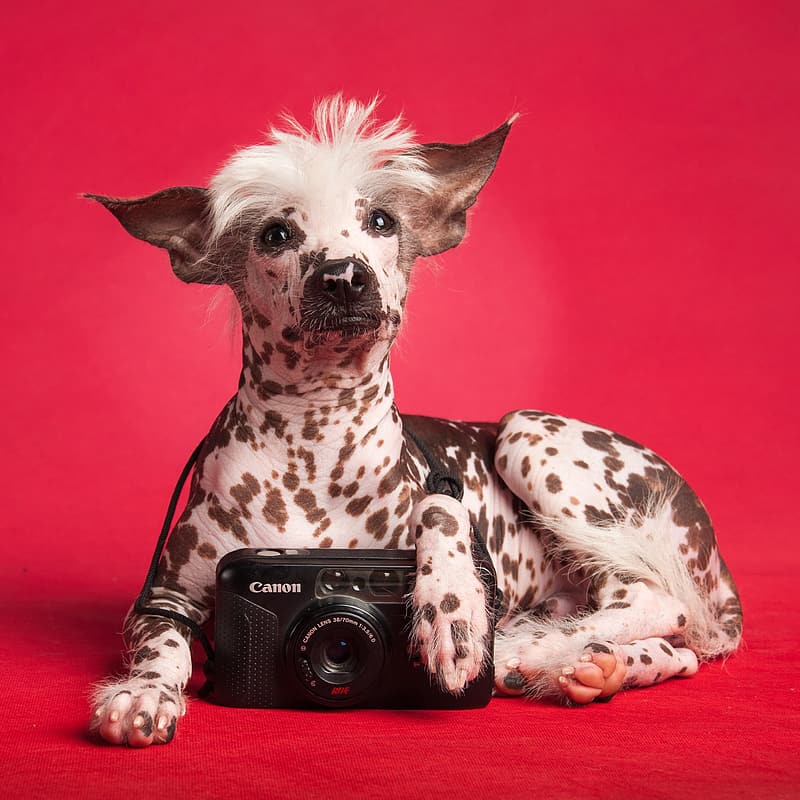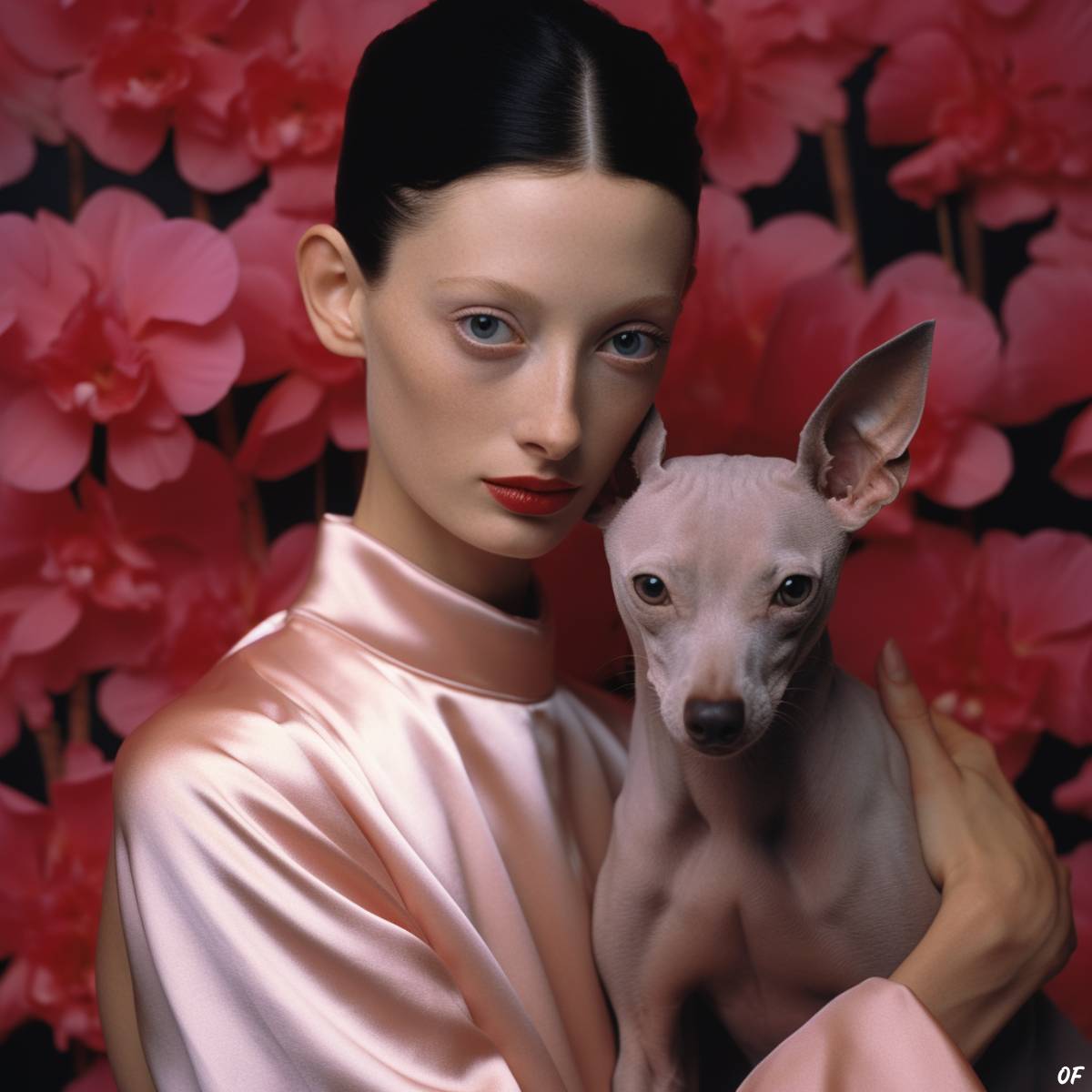A canine enigma rather than a botanical bloom, the Peruvian Inca Orchid, also affectionately referred to as the Peruvian Hairless Dog or colloquially as the ‘Naked Dog,’ embodies an extraordinary fusion of rarity, endearing charm, and compelling historical lineage. Stripped of the typical canine cloak of fur, this distinct breed, with its velvety-smooth and warm-to-the-touch skin, often proves to be an irresistible companion for those who cross its path.
An embodiment of national pride, the Peruvian Inca Orchid reigns as the official canine breed of Peru. It is not merely a product of recent or selective breeding but a living testament to the nation’s ancient history. Evidence of its existence has been preserved on the timeworn pottery of the Chimú, Chanca, and Incan civilizations, a testament to the breed’s enduring legacy stretching back more than 2,000 years.
Prior to the Spanish conquest, the Peruvian Inca Orchid was held in high esteem within local communities, attributed with mystical qualities, and regarded as a conduit for physical healing. Notably, it was believed to possess therapeutic properties, particularly beneficial in the cure or alleviation of arthritis. However, these native beliefs clashed with the dogmas of the incoming Spanish, who considered such reverence heretical and initiated a campaign to eliminate the breed.
Despite the grim decree, the Peruvian Inca Orchid endured. The Spanish colonizers, while intent on the breed’s extermination, paradoxically played a crucial role in its survival. Before executing their drastic plan, they crossbred their own dogs with the Peruvian Inca Orchid, leading to a slightly larger but still predominantly hairless offspring. Through the swirling mists of time, this unique breed survived, retaining its key characteristics and remaining, to this day, a living testament to Peru’s rich and vibrant past.
Indigenous Naming of Peru’s Hairless Dog
Carrying the prestige of being the solitary Peruvian breed with international recognition, the Peruvian Inca Orchid stands as a singular emissary of the nation’s unique canine heritage in the global dog community.
In formal circles, this distinctive breed is officially christened Perro sin pelo del Perú, translating directly as the Peruvian hairless dog. However, within the confines of its homeland, the breed is affectionately known by a more florally inspired moniker—Perro Flora, or the ‘flower dog.’ An intriguing juxtaposition of caninity and botany, this local name, although innocuous in essence, is met with audible grumbles by the breed, as if in playful protest of this unorthodox naming convention.
This unusual epithet owes its origin to the historical anecdotes of the Spanish colonizers. Entranced by the dog’s peculiar proclivity for seeking shelter in caves and avoiding the harshness of the sun, they nicknamed the breed Perros Flora. This was not simply a tribute to the breed’s baldness, which made sun exposure particularly harsh, but also a nod towards the caves’ floral inhabitants—a vibrant assortment of wild orchids, which provided a visually striking backdrop to the dogs’ preferred haunts.
However, the Peruvian Inca Orchid was also associated with another element of nature—the moon. The breed’s nocturnal tendencies, with the dogs often emerging from their caves to engage with the world under the cool, silvery glow of the night, led to their alternative alias, the ‘Moon Dogs.’ This moniker immortalized the intriguing image of these hairless canines basking in the moonlight, embodying a fusion of mystique, beauty, and resilience unique to their breed.
Walklin’s Orchid
The story of how the Peruvian Inca Orchid received its contemporary name traces its roots back to Jack Walklin, an American dog enthusiast and whisperer. Having keenly observed the breed’s cultural tapestry and its historical associations with the Inca civilization and local flora, Walklin, in a masterstroke of cultural assimilation, bestowed upon the breed its official moniker – the Peruvian Inca Orchid dog. His fascination with these unique creatures didn’t stop at naming; Walklin transported eight of these canines back to the United States, sparking their introduction to foreign lands. Later, another breeder ensured their European debut, further widening their geographic reach.
However, the breed’s designation holds an intriguing paradox. In contradiction to its epithet suggesting hairlessness, not all Peruvian Inca Orchids are, in fact, hairless. A significant number of them are born bearing a full coat or distinctive tufts of hair adorning their head or tail. This cranial tuft often presents an amusing aesthetic that can be likened to the ruffled ‘just-out-of-bed’ mohawk hairstyle, invoking images of an age-worn punk rocker from the mid-80s or even a rebellious Keith Richards sporting a mohawk.

Adding to their idiosyncratic charm, the hairy variants of this breed tend to have a complete set of teeth, unlike their hairless counterparts. This peculiarity is linked to the gene responsible for hairlessness, which also influences dental irregularities, often leading to missing teeth.
Despite their rarity, with an estimated population of merely 1,000 worldwide, Peruvian Inca Orchids have proven to be highly practical companions. As they lack fur, they are naturally adept bed warmers and ideal pets for those with allergies to dog hair. Moreover, their hairless constitution prevents easy flea infestations. However, their hairlessness also necessitates specific care, such as the need for sunscreen during outdoor ventures and periodic application of moisturizing creams to maintain their skin health.
For a long period, these dogs were neglected, often reduced to feral existence on the streets of Peru’s bustling cities. It was only in the rural districts of the country that they were accorded any form of social standing. Today, their unique qualities and intriguing history ensure they are increasingly cherished, a testament to their resilience and distinctive charm.
From street strays to style statements
In a commendable effort to conserve and commemorate the Peruvian Hairless Dog, a true national emblem, the Peruvian government has recently initiated significant measures. In an unprecedented move, legislation has been passed mandating the presence of at least two of these unique dogs at every historical site within the country. Gone are the days when these dogs roamed the streets as strays; now, they are guardians of heritage, bearing witness to their nation’s rich history.
The Discovery of a stray Peruvian Inca Orchid is now met with an incentivized response. Should one stumble upon such a dog wandering the streets, it can be returned to the appropriate state agency, with a generous reward of $1,000 acting as a testament to their valued status in Peruvian society.
As of late, the Peruvian Inca Orchid has witnessed a surge in popularity within the upscale neighborhoods of Lima, Peru’s vibrant capital. A stroll through these neighborhoods paints a colorful picture of youthful trendsetters, stylishly attired, promenading along the city’s avenues with their color-coordinated Peruvian Inca Orchids, the dogs’ leashes adding a further splash of matching hues to the tableau.
Despite their rising status as a canine fashion accessory, the Peruvian government’s aspiration transcends the transient nature of trends. The aim is to underscore and promote the breed as an enduring symbol of Peru’s rich history and cultural tapestry. Thus, while their popularity among Lima’s fashion-conscious crowd may wax and wane with the changing tides of style, the cultural significance of the Peruvian Inca Orchid will persist, its roots entrenched deeply in the country’s historical soil.


